Sutharshan Rajasegarar
Robust Zero Trust Architecture: Joint Blockchain based Federated learning and Anomaly Detection based Framework
Jun 24, 2024Abstract:This paper introduces a robust zero-trust architecture (ZTA) tailored for the decentralized system that empowers efficient remote work and collaboration within IoT networks. Using blockchain-based federated learning principles, our proposed framework includes a robust aggregation mechanism designed to counteract malicious updates from compromised clients, enhancing the security of the global learning process. Moreover, secure and reliable trust computation is essential for remote work and collaboration. The robust ZTA framework integrates anomaly detection and trust computation, ensuring secure and reliable device collaboration in a decentralized fashion. We introduce an adaptive algorithm that dynamically adjusts to varying user contexts, using unsupervised clustering to detect novel anomalies, like zero-day attacks. To ensure a reliable and scalable trust computation, we develop an algorithm that dynamically adapts to varying user contexts by employing incremental anomaly detection and clustering techniques to identify and share local and global anomalies between nodes. Future directions include scalability improvements, Dirichlet process for advanced anomaly detection, privacy-preserving techniques, and the integration of post-quantum cryptographic methods to safeguard against emerging quantum threats.
ECG-Adv-GAN: Detecting ECG Adversarial Examples with Conditional Generative Adversarial Networks
Jul 16, 2021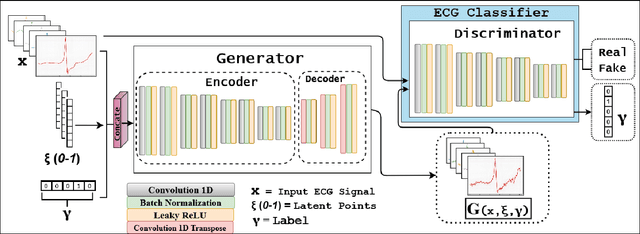
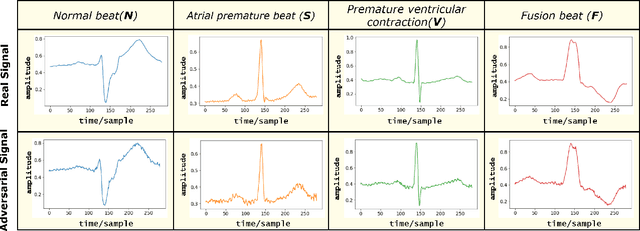

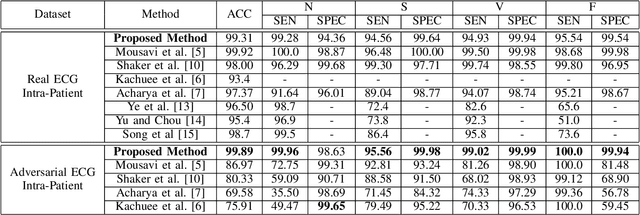
Abstract:Electrocardiogram (ECG) acquisition requires an automated system and analysis pipeline for understanding specific rhythm irregularities. Deep neural networks have become a popular technique for tracing ECG signals, outperforming human experts. Despite this, convolutional neural networks are susceptible to adversarial examples that can misclassify ECG signals and decrease the model's precision. Moreover, they do not generalize well on the out-of-distribution dataset. The GAN architecture has been employed in recent works to synthesize adversarial ECG signals to increase existing training data. However, they use a disjointed CNN-based classification architecture to detect arrhythmia. Till now, no versatile architecture has been proposed that can detect adversarial examples and classify arrhythmia simultaneously. To alleviate this, we propose a novel Conditional Generative Adversarial Network to simultaneously generate ECG signals for different categories and detect cardiac abnormalities. Moreover, the model is conditioned on class-specific ECG signals to synthesize realistic adversarial examples. Consequently, we compare our architecture and show how it outperforms other classification models in normal/abnormal ECG signal detection by benchmarking real world and adversarial signals.
Scalable Bottom-up Subspace Clustering using FP-Trees for High Dimensional Data
Nov 07, 2018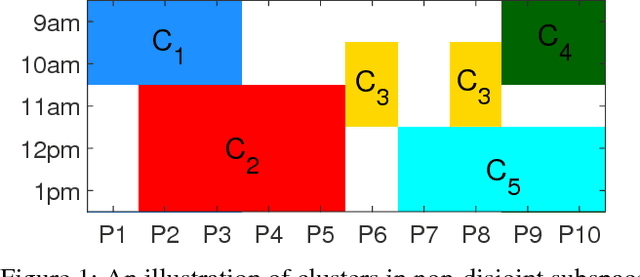
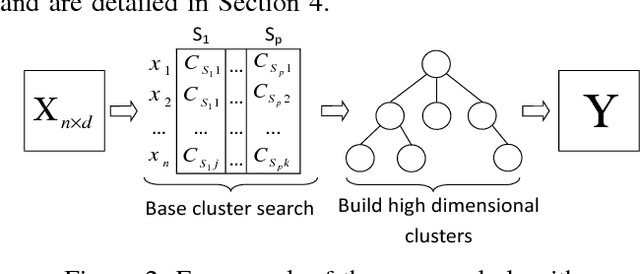
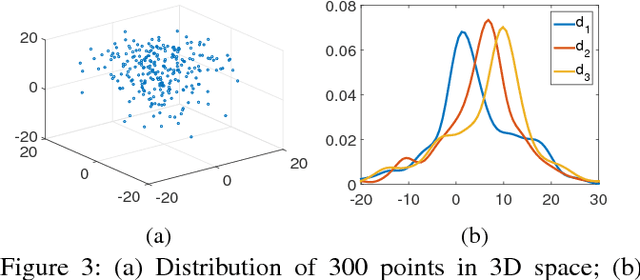
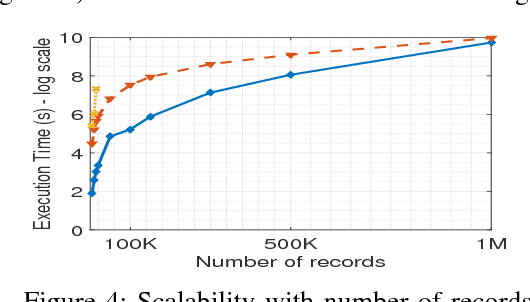
Abstract:Subspace clustering aims to find groups of similar objects (clusters) that exist in lower dimensional subspaces from a high dimensional dataset. It has a wide range of applications, such as analysing high dimensional sensor data or DNA sequences. However, existing algorithms have limitations in finding clusters in non-disjoint subspaces and scaling to large data, which impinge their applicability in areas such as bioinformatics and the Internet of Things. We aim to address such limitations by proposing a subspace clustering algorithm using a bottom-up strategy. Our algorithm first searches for base clusters in low dimensional subspaces. It then forms clusters in higher-dimensional subspaces using these base clusters, which we formulate as a frequent pattern mining problem. This formulation enables efficient search for clusters in higher-dimensional subspaces, which is done using FP-trees. The proposed algorithm is evaluated against traditional bottom-up clustering algorithms and state-of-the-art subspace clustering algorithms. The experimental results show that the proposed algorithm produces clusters with high accuracy, and scales well to large volumes of data. We also demonstrate the algorithm's performance using real-life data, including ten genomic datasets and a car parking occupancy dataset.
A Scalable Framework for Trajectory Prediction
Jun 20, 2018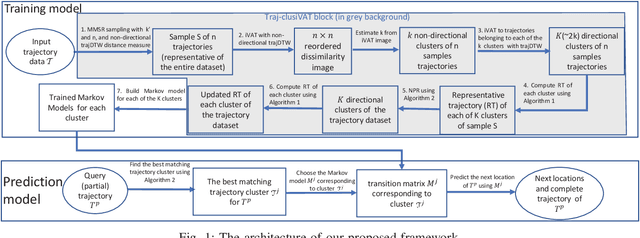

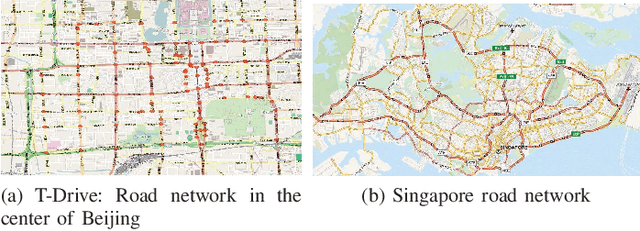

Abstract:Trajectory prediction (TP) is of great importance for a wide range of location-based applications in intelligent transport systems such as location-based advertising, route planning, traffic management, and early warning systems. In the last few years, the widespread use of GPS navigation systems and wireless communication technology enabled vehicles has resulted in huge volumes of trajectory data. The task of utilizing this data employing spatio-temporal techniques for trajectory prediction in an efficient and accurate manner is an ongoing research problem. Existing TP approaches are limited to short-term predictions. Moreover, they cannot handle a large volume of trajectory data for long-term prediction. To address these limitations, we propose a scalable clustering and Markov chain based hybrid framework, called Traj-clusiVAT-based TP, for both short-term and long-term trajectory prediction, which can handle a large number of overlapping trajectories in a dense road network. In addition, Traj-clusiVAT can also determine the number of clusters, which represent different movement behaviours in input trajectory data. In our experiments, we compare our proposed approach with a mixed Markov model (MMM)-based scheme, and a trajectory clustering, NETSCAN-based TP method for both short- and long-term trajectory predictions. We performed our experiments on two real, vehicle trajectory datasets, including a large-scale trajectory dataset consisting of 3.28 million trajectories obtained from 15,061 taxis in Singapore over a period of one month. Experimental results on two real trajectory datasets show that our proposed approach outperforms the existing approaches in terms of both short- and long-term prediction performances, based on prediction accuracy and distance error (in km).
 Add to Chrome
Add to Chrome Add to Firefox
Add to Firefox Add to Edge
Add to Edge